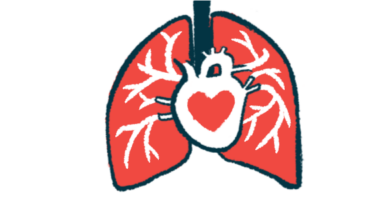Neck Ultrasound Helpful for Diagnosing Sarcoidosis, Study Finds

Having an ultrasound of the neck may be useful for diagnosing certain cases of sarcoidosis — and for ruling out other similar conditions, a new study highlights.
In fact, statistical models based on ultrasound measures used in the study were shown to accurately identify 90% of patients with and without sarcoidosis affecting the neck.
These findings suggest that ultrasound has “great potential” as a diagnostic tool for this immune system disorder.
The study, “Application of neck ultrasound in the diagnosis of sarcoidosis,” was published in BMC Pulmonary Medicine.
Diagnosing sarcoidosis is often a long and complex process that involves looking for signs of the specific kinds of inflammation that cause the disease, and also ruling out other conditions that can give rise to similar symptoms. This is particularly challenging given that sarcoidosis can affect any organ, or multiple organs concurrently.
Now, a team of researchers in China evaluated the usefulness of neck ultrasound for diagnosing sarcoidosis in people for whom the disease affects structures in the neck. Ultrasound is an imaging technique that uses sound waves to visualize structures in the body.
The scientists analyzed data from 88 patients evaluated at the Shanghai Pulmonary Hospital from September 2018 through December 2019. Among them, 20 had sarcoidosis, while the rest had other conditions like tuberculosis or cancer. All of the patients had cervical lymphadenopathy, referring to an enlargement in the lymph nodes (immune organs) located in the neck.
Results showed that there were significant differences between the sarcoidosis and non-sarcoidosis groups for numerous characteristics measured by the neck ultrasound. For example, sarcoidosis patients were significantly more likely to have disease involvement on both sides of the neck, and they also tended to have a higher elasticity score, indicating stiffer tissue.
Differences also were noted with contrast-enhanced ultrasound (CEUS) imaging — a form of ultrasound that uses a dye injected into the body to help visualize the different structures. Non-sarcoidosis patients, for instance, especially those with tuberculosis or tumors, were more likely to display evidence of tissue death, known as necrosis. Notably, none of the sarcoidosis patients showed signs of necrosis.
This indicates that testing for tissue death using CEUS “can be used to rule out sarcoidosis” from other possible conditions when figuring out a diagnosis, the researchers wrote.
The team constructed statistical models based on seven different ultrasound-related measures, and found that these models could accurately identify 90% of the sarcoidosis and non-sarcoidosis patients in the study.
“The ultrasound diagnosis model established by the binary classification algorithm helps to distinguish the diagnosis of sarcoidosis from” other diseases that cause similar symptoms, the researchers wrote.
They concluded that “lymph nodes [in the neck] displayed under conventional ultrasound and CEUS have certain specific characteristics which are helpful for the diagnosis and differential diagnosis of sarcoidosis and have a great potential to become an important non-invasive complement to existing diagnostic methods.”
The team noted several limitations of this study, particularly its small size and retrospective nature, stressing a need for more research to understand the utility of neck ultrasound for diagnosing sarcoidosis.







